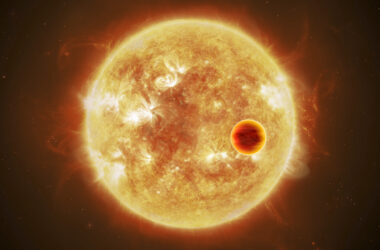The European Space Agency (ESA) is poised to launch its next mission to transform our understanding of the Sun. The Proba-3 mission, comprised of two satellites flying in precise formation, will create artificial solar eclipses, enabling scientists to study the Sun’s mysterious outer atmosphere, the corona, in unprecedented detail.

Set to lift off from India’s Satish Dhawan Space Centre at 5:38 a.m. EST on December 7th, Proba-3 marks ESA’s first attempt at millimeter-level precision formation flying. Once the two satellites reach their highly elliptical orbit, ranging from 370 to 37,000 miles above Earth, they will align to form a 492-foot-long coronagraph. The lead spacecraft will cast a shadow on its trailing partner, blocking the blinding glare of the Sun’s surface and allowing the rear satellite’s instruments to capture detailed observations of the faint corona.
Typically, total solar eclipses provide brief windows to study the Sun’s outer atmosphere from Earth. However, these celestial alignments are rare, geographically limited, and last only minutes. In contrast, Proba-3 will generate over 50 artificial eclipses annually, each spanning six hours.
Proba-3
At the heart of Proba-3’s success lies a remarkable feat of aerospace engineering – the ability to maintain a precise flying formation with millimetre accuracy.
To do this, the two satellites have to use some new tech, including:
- Optical Metrology: The spacecraft will continuously use a laser-based optical metrology system to measure their relative positions with micrometre precision. By exchanging laser beams, the satellites triangulate their exact distance and orientation.
- Autonomous Controls: Proba-3 will operate autonomously, relying on onboard computers to process metrology data and command minute adjustments to the satellites’ positions using reaction wheels and cold gas thrusters. This real-time feedback loop maintains the strict formation tolerances.
- Coronagraph Instrument: The rear satellite houses ASPIICS (Association of Spacecraft for Polarimetric and Imaging Investigation of the Corona of the Sun), a state-of-the-art coronagraph. ASPIICS leverages a novel design with an external occulter on the forward satellite to achieve an unprecedented field of view, extending to just 1.4 solar radii from the Sun’s surface.
The integration of this tech enables Proba-3 to function as a virtual telescope with extraordinary precision.
Solar Scientists are anticipating answers to long-standing questions about the Sun from Proba-3 data. The oldest mystery is the question of coronal heating—understanding why the Sun’s atmosphere reaches scorching temperatures of up to 1 million degrees Celsius, far hotter than the 5,500°C solar surface.
The hope is that Proba-3’s close-up observations of magnetic waves and nanoflares could reveal the hidden mechanisms that heat the corona.
The mission will also investigate how the solar wind—a stream of charged particles emanating from the corona—is accelerated to supersonic speeds. By tracking plasma blobs and magnetic switchbacks near the Sun, Proba-3 may uncover the forces propelling this constant outflow of solar material.
The Sun’s corona is the launchpad for massive eruptions called coronal mass ejections (CMEs), which can trigger geomagnetic storms and disrupt technology on Earth. Proba-3’s monitoring should capture the initiation and early evolution of CMEs in detail, improving our ability to forecast and mitigate space weather impacts.
Beyond its scientific objectives, Proba-3 will act as a case study for precision formation flying, a capability that could change how future missions approach broader space exploration. By demonstrating that multiple spacecraft can operate in unison like a single instrument, Proba-3 opens the door to building different types of space-based observatories.
TLDR:
- ESA’s Proba-3 mission, launching December 7th, will study the Sun’s outer atmosphere using two satellites flying in precise formation
- The satellites will create artificial solar eclipses, enabling six-hour-long corona observations.
- Key mysteries to be investigated include coronal heating, solar wind acceleration, and coronal mass ejections.
- Proba-3 showcases cutting-edge formation flying technologies that could enable future large space observatories.








